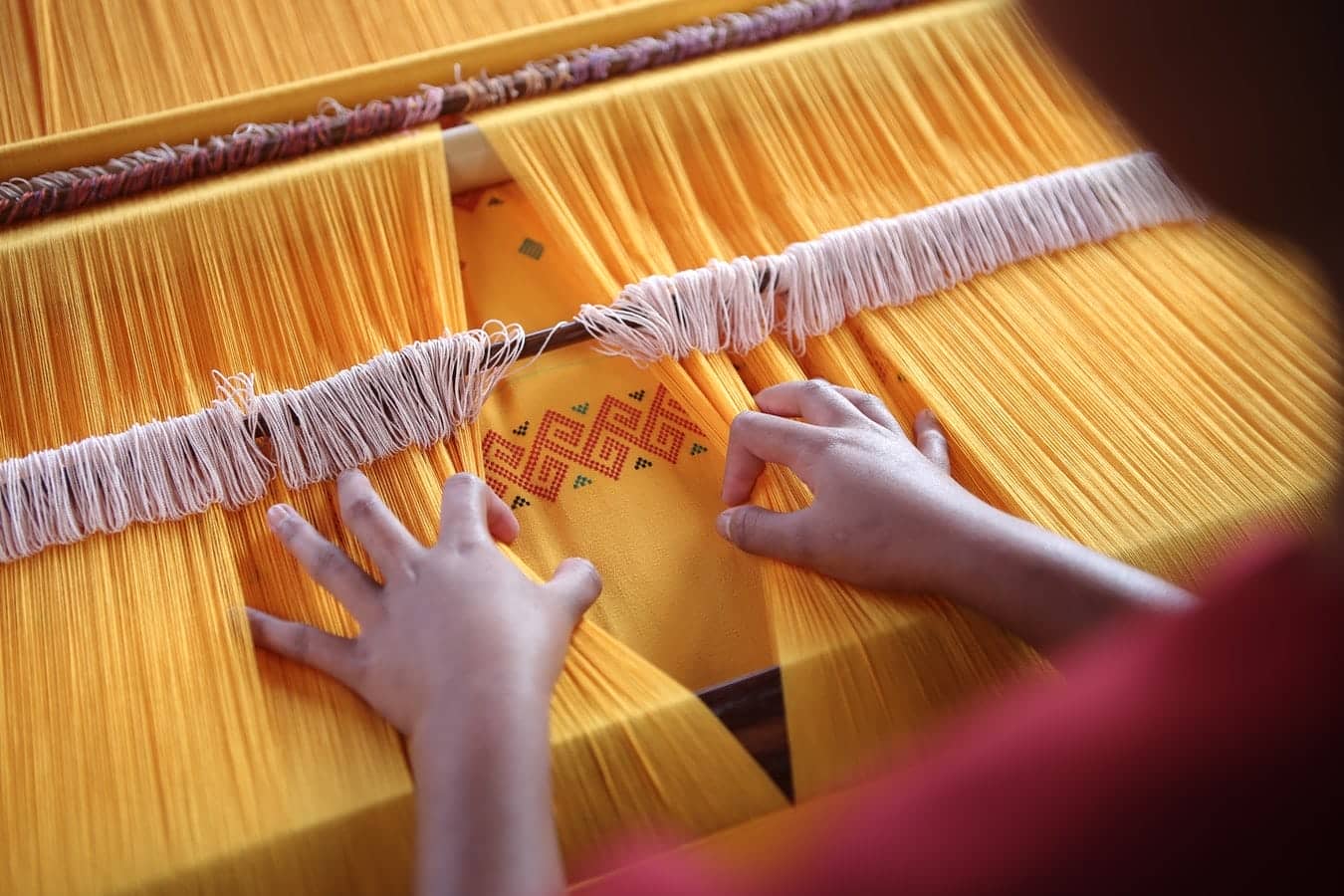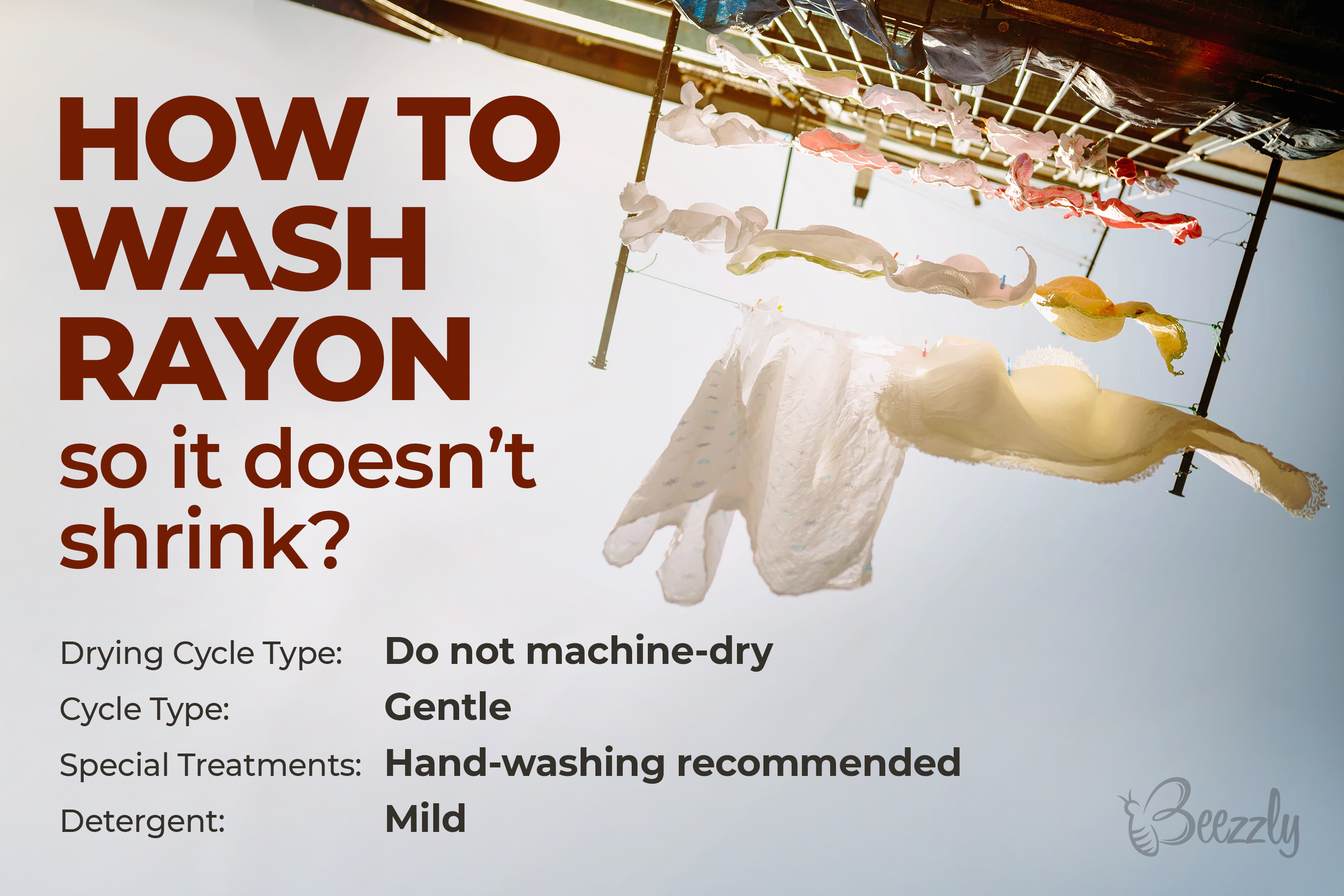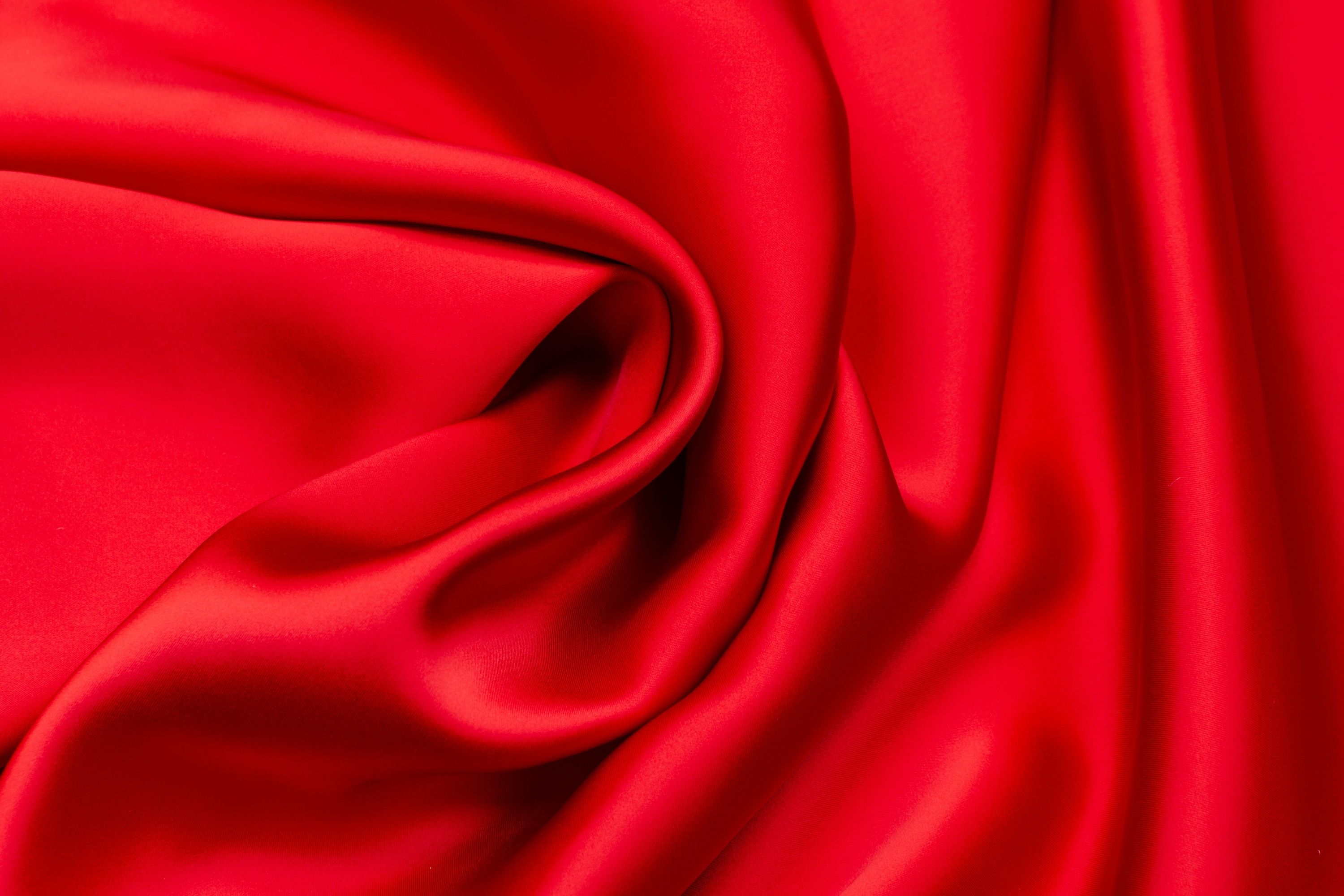Rayon can be called a true miracle – all because of its fascinating ability to shapeshift, both literally and in terms of imitation of the other fabrics’ characteristics.
And since this material can be rather challenging for a common user to maintain, below we will provide the basic information that will be 100% handy for everyone.
What Is Rayon? How It Is Manufactured
To begin with, rayon is not that simple thing even when it comes to defining its origin. Being produced from the purified fibers of cellulose that are originally derived from wood pulp, rayon, however, needs certain chemicals to receive the material from those fibers.
Because of that, rayon eco-friendliness is often questioned even though some kinds of it are quite nature-safe and sustainable.
For this reason, it can not be called a completely natural material, and that is also why rayon is considered to be a semi-artificial fabric.
Being very versatile, this material includes several variations, for instance, viscose rayon that reminds cotton very much, then it’s modal rayon that is received from the beech trees, and finally, lyocell.
All of those materials are used for making clothing of all types and for any purpose, from daily use to sportswear.
[table id=41 /]
Related: Does Rayon Shrink?
Material’s Specifics
Since rayon can mimic many other fabrics, it has universal characteristics. The material
is soft and smooth, it doesn’t tend to trap the body heat which makes this fabric always cool on the skin. Moreover, rayon is easy to dye since its half-natural origin makes it the same color perceptive. Besides, it is breathable and not heavy at all which (in addition to the pleasant feeling it leaves on the skin and the fabric’s nice appearance) make rayon one of our favorites.
Nevertheless, certain specifics exist and they need to be remembered. For instance, rayon tends to shrink . The material is very predisposed to heat which makes it troublesome to launder rayon, besides, it is badly resistant to water and humidity, that is why on humid days rayon items can get a bit oversized.
However, dealing with these nuances is pretty simple and doesn’t take much effort.
To better understand what are the pros and cons of this fiber, check this chart out.
[table id=42 /]

Maintenance Nuances
This material is rather sensitive to heat and moisture, that is why proper care is a must.
The best option is to dry-clean rayon items, but for the daily clothing, handwash can be ok, too. Only keep in mind that the water must be warm, and the optimal laundering product is soap or heavy-duty detergent.
- Never wring or twist rayon to avoid deformation
- Don’t rub when laundering. For deleting stains, better take the item to the dry cleaner’s
- Iron when items are still a bit wet
- Flat dry rayon apparel, but never tumble-dry
Like that, you will keep the garments longer.
So, like any synthetic material, rayon has its benefits and nuances. However, the number of positive features is way more than of negative ones, besides, rayon is only half-artificial, so this material can be quite a good substitute for the fully synthetic fibers.
How to Launder Rayon?
When washing pieces of clothing made of rayon, you need to be very careful! See, this fabric is often made with the use of additional fibers, often cotton or polyester, which is why garments made of rayon may have quite distinct care instructions.
So always check the care tags prior to tossing your rayon clothes into the barrel of the washing machine. Yes, the texture and versatility of rayon make this material quite a good pick for most of the garments, but you need to keep in mind that rayon is not much durable material!
Even an ordinary machine wash may leave your rayon garments shrunk, stretched, or make them bleed. This is why the ideal option is to hand-wash rayon clothes and launder them with items of similar colors. But still, check the care tag anyway!

What Is Rayon’s Origin And History?
Like most inventions, rayon owes its “birth” to the problem. In the 1860s, the silk industry in France was about to collapse because of the disease that affected the silkworm. Two greatest scientists of that time, Louis Pasteur and Count Hilaire de Chardonnet, were trying to find a solution and save the situation.
This is when Chardonnet became interested in producing artificial silk, and in 1885 he patented the successful method of making fibers from cellulose. For the next decades, this fabric was known as artificial silk, and by 1925, it all grew into the rayon-making industry.
Later, rayon was divided into two types. One of them was the material that was made completely of pure cellulose and it was called rayon. Another one contained cellulose compounds. However, for quite a long time this fabric was mostly used for home and industrial furnishing since it was considered too weak as for the fabric that could be used for sewing garments.
But after high-wet-modulus rayon was invented in 1955, this material began to be used for making towels, shirts, and other clothes. And today it remains one of the most widespread materials that is manufactured worldwide.

How Is Rayon Made?
So how is rayon manufactured? First of all, this type of fiber is made of cotton linters and cellulose that is received from wood pulp (mostly from spruce, pine, and hemlock trees). Viscose rayon is the most widespread type of this fabric. It can be blended with either man-made or natural fibers to be later made into fabrics that have distinct texture and weight.
Regardless of the type, a raw material for making rayon must always be processed so that the cellulose could be extracted and purified. Afterward, those pure white sheets of cellulose are treated with caustic soda and go through a spinneret to get regenerated filaments.
Those are spun into yarns and later made into the desired material. Also, once these fibers are successfully cured, they can be treated with post-procession chemicals and go through various weaving procedures to manufacture the fabric.
Another type of rayon known as high-wet-modulus (HWM) rayon is much stronger in comparison to a common sort of material. It is quite similar to cotton and it is quite easy to maintain. For instance, fabrics that contain such a material can be safely washed in laundry machines. On the contrary, pure rayon can only be dry-cleaned.

What Is Rayon Used For?
The most common area of use for this type of fabric is to make all sorts of clothing and home-ware, for instance, sheets, blankets, curtains, etc. Rayon can also be used for making tire cords and different surgical products.
What Are the Advantages Of Rayon?
Like any fabric, rayon has its benefits and weak points. As for the beneficial traits of this material, we can name such advantages as:
- Low price
- Expensive and luxurious appearance
- Have a silk-like feel
- Drapes very well
- Breathable
- Easy to blend with other fibers
- It is easy to dye
Because of these reasons, rayon has become so popular nowadays in all the countries in the world.
What Are the Disadvantages Of Rayon?
However, there are also certain disadvantages that rayon has which you should be aware of.
- It’s not a strong fabric
- It gets weaker if exposed to moisture or light
- Pure rayon must be dry-cleaned only to avoid shrinking
- Prone to damage when being ironed
And even these weaknesses are not that severe, quite many people prefer using natural fabrics instead of rayon since those are easier to maintain.

How Do I Print On Rayon?
There is one more feature of rayon that quite few people know about. You can easily print on this fabric! This is an ideal solution in case you want to turn your rayon piece of clothing into a custom masterpiece that no one else has.
With Contrado, it is even simpler to achieve! All you need to do is to pick an image (it can be a photo, a piece of art, or anything else), and upload it to the user-friendly design interface. After that, you can create an ideal fabric for any creative project of yours!

Conclusion
Rayon is quite a versatile type of material that can be used for many different purposes. It is easy to use and care for, and it is cheaper than many natural fabrics which makes it an affordable alternative to silk and even cotton.
However, even rayon has its weak sides. It requires quite a delicate care and treatment, and besides, this type of fiber can hardly be called strong or durable. So if you are looking for something that will stand rain and sun, better opt for natural fabrics.
[wp-faq-schema title=”Frequently Asked Questions”]

Is rayon a good fabric? I want to shift 100% synthetics to something more universal so I thought rayon could be a good option.
Well, I think it’s ok. It is very light and breathable, I always enjoy wearing it in summer! Besides, it feels good to the skin, not so harsh like polyester, for example.
You might have trouble with washing it, but that’s the only issue.
Hello! Could someone help me to clarify one issue, please? Does acrylic cause cancer? Does anyone know?
I suppose you mean acrylic fibers. If yes, then I have to disappoint you since they are harmful. They contain a carcinogen that can cause breast cancer when being in contact with the skin too often.
Does rayon shrink more than once? Will it get smaller after each wash?
I suppose it will. I suggest you dry-clean it instead, only choose the organic dry cleaner’s.
Does rayon wrinkle when you wear it? did anyone have that experience?
It will wrinkle a lot if it will get soaked. If the fabric is dry, it wrinkles, too, but not so much.
I’m very concerned about wearing synthetics that’s why I’d like to know: is rayon a plastic?
Hi! No, it isn’t. It’s a semi-synthetic fabric made of cellulose which is a component derived from trees.
How is rayon harmful to humans? I know it’s only half synthetic, but it does use chemicals. So what are the possible damages?
I heard that constant wearing of it can cause headaches, nausea, and even insomnia. To tell the truth, I never had a chance to check it since I’m not wearing synthetics at all.
Can clothes cause cancer? Thanks a lot for your answers, it’s really important to me!
They can. E.g. rayon, nylon, acrylic, and polyester are considered to be toxic since all of them use chemicals when being manufactured.